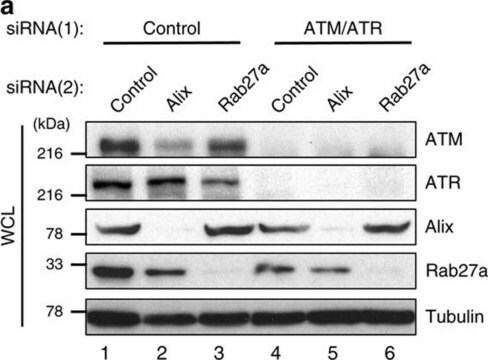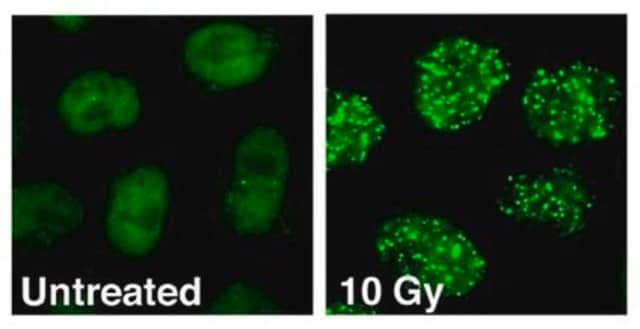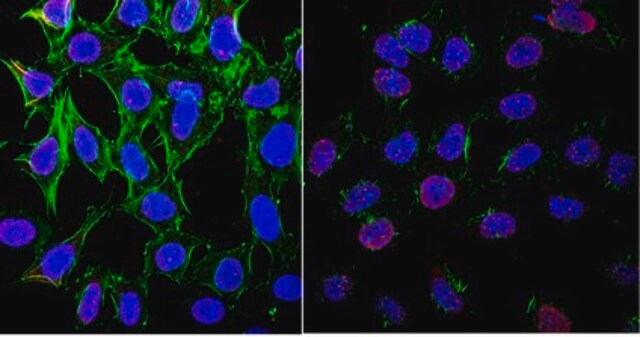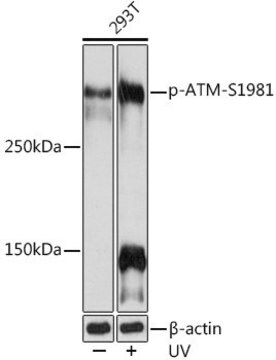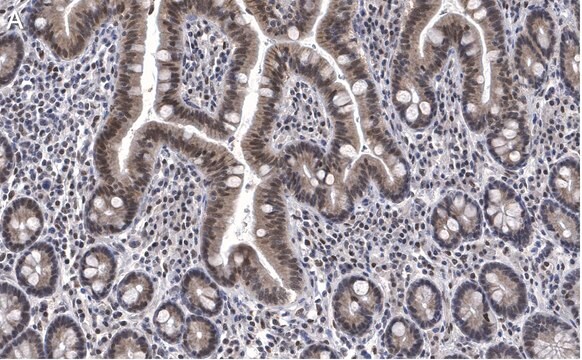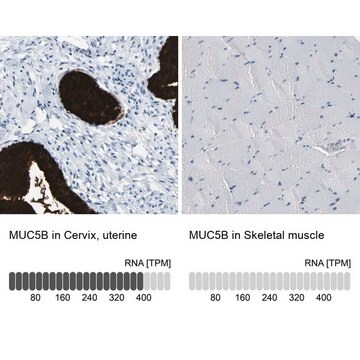05-740
Anti-phospho-ATM (Ser1981) Antibody, clone 10H11.E12
clone 10H11.E12, Upstate®, from mouse
Synonym(s):
A-T, mutated, AT mutated, TEL1, telomere maintenance 1, homolog, ataxia telangiectasia mutated, ataxia telangiectasia mutated (includes complementation groups A, C and D), ataxia telangiectasia mutated protein, human phosphatidylinositol 3-kinase homolog
About This Item
Recommended Products
biological source
mouse
Quality Level
antibody form
purified antibody
antibody product type
primary antibodies
clone
10H11.E12, monoclonal
species reactivity
mouse, human
packaging
antibody small pack of 25 μg
manufacturer/tradename
Upstate®
technique(s)
immunocytochemistry: suitable
immunofluorescence: suitable
immunoprecipitation (IP): suitable
western blot: suitable
isotype
IgG1κ
NCBI accession no.
UniProt accession no.
shipped in
ambient
target post-translational modification
phosphorylation (pSer1981)
Gene Information
human ... ATM(472)
General description
Specificity
Immunogen
Application
Phosphorylated ATM was immunoprecipitated from irradiated HeLa cells (Figure A, lanes 3 and 4).
Immunocytochemistry:
Foci are detected in irradiated human and mouse fibroblasts. Determined by an independent laboratory.
Epigenetics & Nuclear Function
Cell Cycle, DNA Replication & Repair
Quality
Western Blot Analysis:
0.5 µg/mL of this lot detected phosphorylated ATM in crude lysates from irradiated HeLa cells.
Target description
Physical form
Storage and Stability
Handling Recommendations:
Upon receipt, and prior to removing the cap, centrifuge the vial and gently mix the solution. Aliquot into microcentrifuge tubes and store at -20°C. Avoid repeated freeze/thaw cycles, which may damage IgG and affect product performance. Note: Variability in freezer temperatures below -20°C may cause glycerol containing solutions to become frozen during storage.
Analysis Note
Irradiated HeLa cell lysates
Other Notes
Legal Information
Disclaimer
Not finding the right product?
Try our Product Selector Tool.
recommended
Storage Class Code
10 - Combustible liquids
WGK
WGK 1
Certificates of Analysis (COA)
Search for Certificates of Analysis (COA) by entering the products Lot/Batch Number. Lot and Batch Numbers can be found on a product’s label following the words ‘Lot’ or ‘Batch’.
Already Own This Product?
Find documentation for the products that you have recently purchased in the Document Library.
Our team of scientists has experience in all areas of research including Life Science, Material Science, Chemical Synthesis, Chromatography, Analytical and many others.
Contact Technical Service